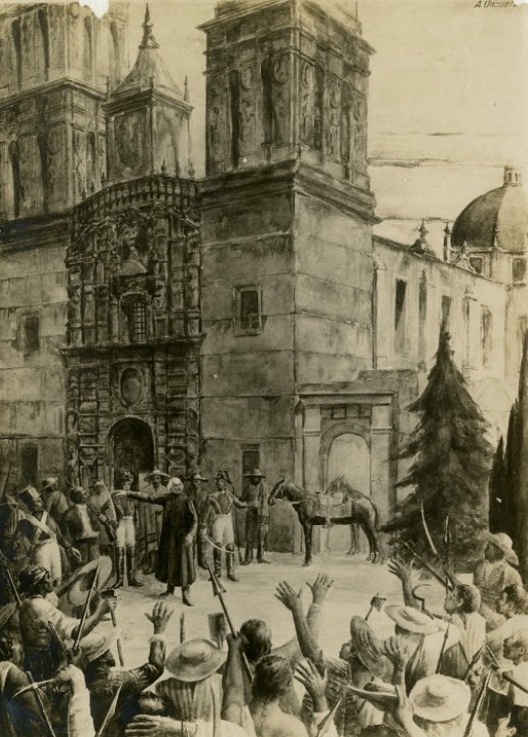In Honor of Mexican Independence Day
Every September 16th, Mexico celebrates one of the most important days in Hispanic history - the anniversary of Mexico’s Independence from Spain.
Commonly confused with and overshadowed by Cinco de Mayo, it’s important to recognize that the holidays celebrate different events. Cinco de Mayo celebrates Mexico’s defeat over France at the Battle of Pueblo in 1862. Mexican Independence Day commemorates the day that Catholic priest Miguel Hidalgo made a cry for independence during a riveting speech in the town of Dolores, which eventually became known as the "Grito de Dolores.” The speech not only gave people hope that they would be free, but it also marked the start of a revolt against the Spaniards the grew into an 11-year conflict that became known as the Mexican War of Independence.

via Wikimedia Commons
To provide some historical context, when Napoleon Bonaparte invaded Spain and imposed his brother as King in 1808, a rather chaotic atmosphere was created. His occupation of the country created the perfect opportunity to rebel against the Spanish caste system without committing treason. Rebels could still pledge their loyalty to Spain by pleading their rebellious behavior was in betrayal to Napoleon and his rule. And so, an outbreak of revolts popped up across Spanish America. Miguel Hidalgo and his populist army went on the attack after his famous speech in 1810; the general populace took up arms against the Spaniards and began to fight for their freedom in a series of battles and even came very close to capturing the Mexican capital.
After some initial successes, Hidalgo was defeated, captured, and executed… But his fight and message lived on as other leaders stepped up in his place and began to lead their own armies of revolutionaries against the Spanish and the Royalists.
The Mexican War of Independence severely impacted the country’s access to natural resources, which in turn caused instability, both financially and politically speaking. This of course put Mexico in a tough position and created a situation where they were somewhat unprepared for independence. Nevertheless, the conflict ended on August 24, 1821, when Spanish Viceroy Juan de O’Donojú signed the Treaty of Córdoba, which approved a plan to make Mexico an independent constitutional monarchy, formally ending its 300-year colonial reign over Mexico.
It’s important that people celebrate and not forget the significance of September 16th. Celebrations take a similar form to America’s celebrations of the 4th of July; our neighbor to the south commemorate the end of colonial rule with everything from parades to festivals to family parties. In Chicago, you’ll notice groups of cars proudly parading the Mexican flag as they honk in celebration throughout the city. However you chose to celebrate, please be safe and remember to reflect on the holiday’s historical significance.
To learn more about Mexico’s Independence from Spain, check out:
Ducey, Michael Thomas. A Nation of Villages: Riot and Rebellion in the Mexican Huasteca, 1750-1850. Tucson: University of Arizona Press, 2004. Call number: HN120 .H8 D83 2004
Kessell, John L. Spain in the Southwest: A Narrative History of Colonial New Mexico, Arizona, Texas, and California. Norman: University of Oklahoma Press, 2002. Call number: F799 .K38 2002
Marley, David. Mexico at War: From the Struggle for Independence to the 21st-Century Drug Wars. Santa Barbara, California: ABC-CLIO, LLC, 2014. Call number: F1227.5 .M37 2014
Vargas, Zaragosa. Crucible of Struggle: A History of Mexican Americans from Colonial Times to the Present Era. 1st ed. New York: Oxford University Press, 2010. Call number: E184 .M5 V343 2010